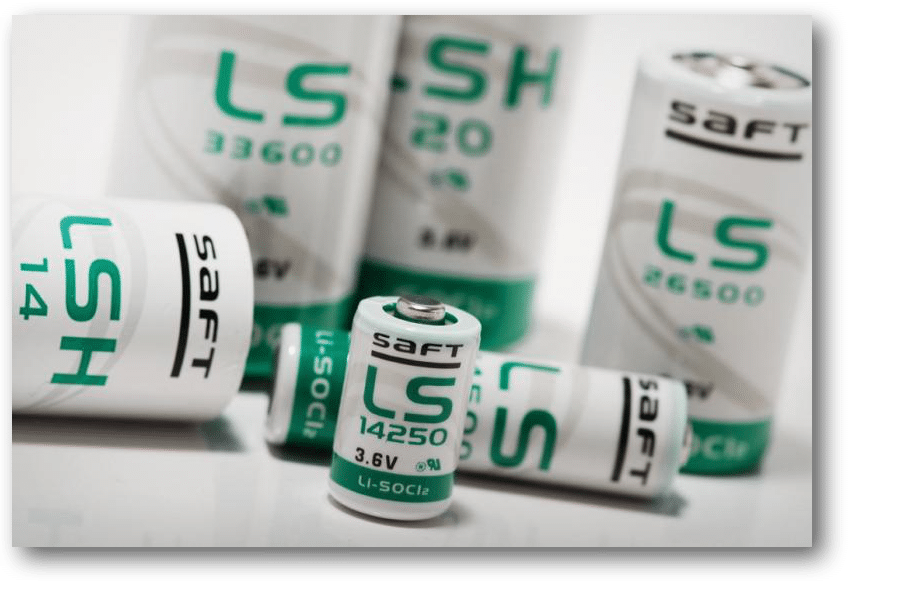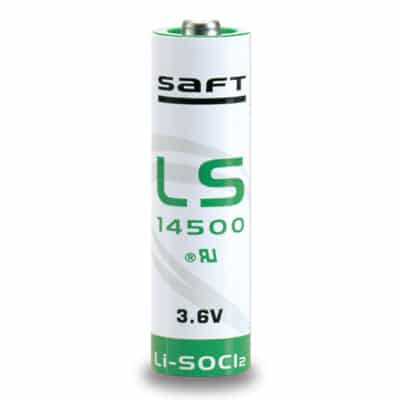THE BATTERIES POWERING YOUR IOT CONNECTED DEVICES

Li-SOCL2 and powering IOT devices, or the internet of things is a hot topic, it seems that every day more and more devices can “talk” or communicate information to more and more devices.
So what are IOT device’s, essentially “the internet of things (IOT) is the extension of internet connectivity into physical and everyday objects.” (https://en.wikipedia.org/wiki/Internet_of_things) like your fridge that can call a repair agent if broken, or a doorbell that sends an alert to your phone when there’s someone at your door. Of course, all these things require power to operate or transmit information.
Everything from wireless sensors, accelerometers, to conservation devices, GPS units and smart meters, the list of new possible data collection devices is growing every day. So, what is the “best” battery chemistry for powering this ever-growing list and is it Li-SOCL2?
The best battery solutions can vary hugely depending on the power requirements, but also the physical environment that the battery is housed in. From Wearables, to Smart Building devices and transport, all have large differences in the temperatures and tolerances that can be expected.
Electronics designers often request a Lithium Thionyl Chloride cell (Li-SOCL2), 3.65V OCV (Open Circuit Voltage) with “X” amount of amp hours because of the information advertised in the data sheet and based on this information, decide this will deliver the device 10 years of life in the field.
Whist this is good in theory, it often does not end up being true or the best solution. This is because, 9 times out of 10, the data sheet does not tell you about all the quirks of that chemistry, it does not tell you that with Li-SOCL2 you may get passivation, a topic that we will come onto, or that you may get brown out as your peak current (mAh) draw is too high due to your particular temperature range.


Life estimation of batteries is a very tricky thing and in is often best done by the cell manufacturer. Indeed, major cell manufacturers all offer a free service through their agents such as SIMPOWER, called a Product Study Request (PSR) or application request, where you can detail all the power requirements of your device, pulse current draw, peak current, frequency of draw, standby current etc… the average temperature and the extremes and the ideal life of the product that you would like to achieve.
However, as with all things, the information out is only as good as the information put in. The more accurate the initial data, the more accurate the life estimation.
Coming back to battery quirks, one of the more popular battery chemistries for IOT devices is Lithium Thionyl Chloride (Li-SOCL2). Li-SOCL2 has some great qualities, having a high voltage response which is stable during most of the life time of the application, a wide operating temperature range from -60°C to +85°C and a low self-discharge rate, less than 1% after 1 year of storage at +20°C. (SAFT, September 2009, Doc. No 31064-2-0909 – Primary lithium battery LS 14500)
These benefits are often fantastic for powering IOT devices, they mean long life in the field, high reliability and consistent performance. But, one of the attributes that makes these batteries great, the low self-discharge rate is also one of the potential issues. Lithium primary batteries with liquid cathodes are affected by the phenomenon known as “passivation”.
Passivation in Li-SOCL2 is a film of lithium chloride (LiCi) that forms on the surface of the lithium anode in the cell. When there is no load on the cell, this helps to protect the lithium from discharging on its own. Unfortunately, it also can increase the internal resistance of the cell causing a delay in voltage delivery until the layer has been cleared.
Essentially, this looks like a temporary drop in the voltage, not good news if your IOT device has a high voltage cut off as it can cause the device to stop transmitting, or at worst switch off.
There are numerous factors that influence passivation, storage temperatures, both in field and before installation, length of storage before deployment, the discharge temperature and current capability of the cell. There are also protocols to de-passivate cells prior to instillation and is best to talk to an authorised cell supplier about how to go about this.
If Li-SOCL2 seems like the ideal battery chemistry for your device, a possible solution to this problem is to build a de-passivation function into your IOT device’s circuit, that can clear the passive layer on the cell prior to running the transmit or data collection function. Alternatively, another solution is to build a super capacitor into the battery pack which instantly delivers the required voltage and milliamps and negates any passivation problems.
There are numerous ways around this feature of Li-SOCL2 which all depend on your device’s specific requirements. The best advice is to contact us and go over your IOT devices portable power needs.
SAFT have also developed a new online tool to help you select the best cell for your IOT application.
